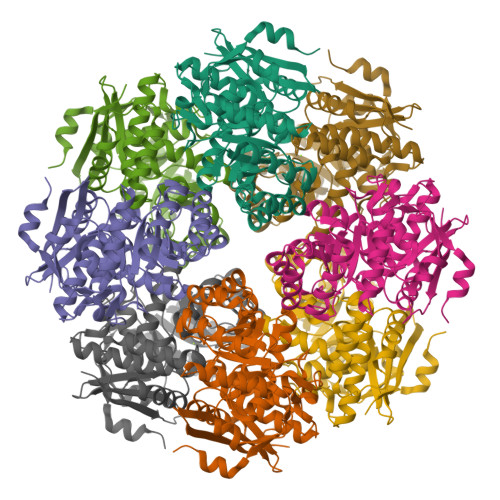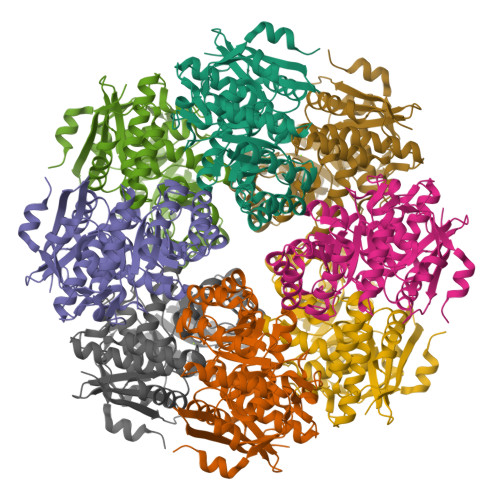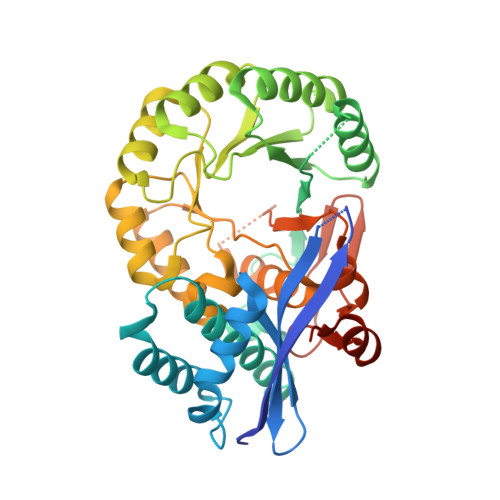Carrageenan catabolism is encoded by a complex regulon in marine heterotrophic bacteria.
Ficko-Blean, E., Prechoux, A., Thomas, F., Rochat, T., Larocque, R., Zhu, Y., Stam, M., Genicot, S., Jam, M., Calteau, A., Viart, B., Ropartz, D., Perez-Pascual, D., Correc, G., Matard-Mann, M., Stubbs, K.A., Rogniaux, H., Jeudy, A., Barbeyron, T., Medigue, C., Czjzek, M., Vallenet, D., McBride, M.J., Duchaud, E., Michel, G.(2017) Nat Commun 8: 1685-1685
- PubMed: 29162826
- DOI: https://doi.org/10.1038/s41467-017-01832-6
- Primary Citation of Related Structures:
5OLC, 5OPQ - PubMed Abstract:
Macroalgae contribute substantially to primary production in coastal ecosystems. Their biomass, mainly consisting of polysaccharides, is cycled into the environment by marine heterotrophic bacteria using largely uncharacterized mechanisms. Here we describe the complete catabolic pathway for carrageenans, major cell wall polysaccharides of red macroalgae, in the marine heterotrophic bacterium Zobellia galactanivorans. Carrageenan catabolism relies on a multifaceted carrageenan-induced regulon, including a non-canonical polysaccharide utilization locus (PUL) and genes distal to the PUL, including a susCD-like pair. The carrageenan utilization system is well conserved in marine Bacteroidetes but modified in other phyla of marine heterotrophic bacteria. The core system is completed by additional functions that might be assumed by non-orthologous genes in different species. This complex genetic structure may be the result of multiple evolutionary events including gene duplications and horizontal gene transfers. These results allow for an extension on the definition of bacterial PUL-mediated polysaccharide digestion.
Organizational Affiliation:
Sorbonne Universités, UPMC Univ Paris 06, CNRS, UMR 8227, Integrative Biology of Marine Models, Station Biologique de Roscoff, CS 90074, Roscoff, Bretagne, France.



















